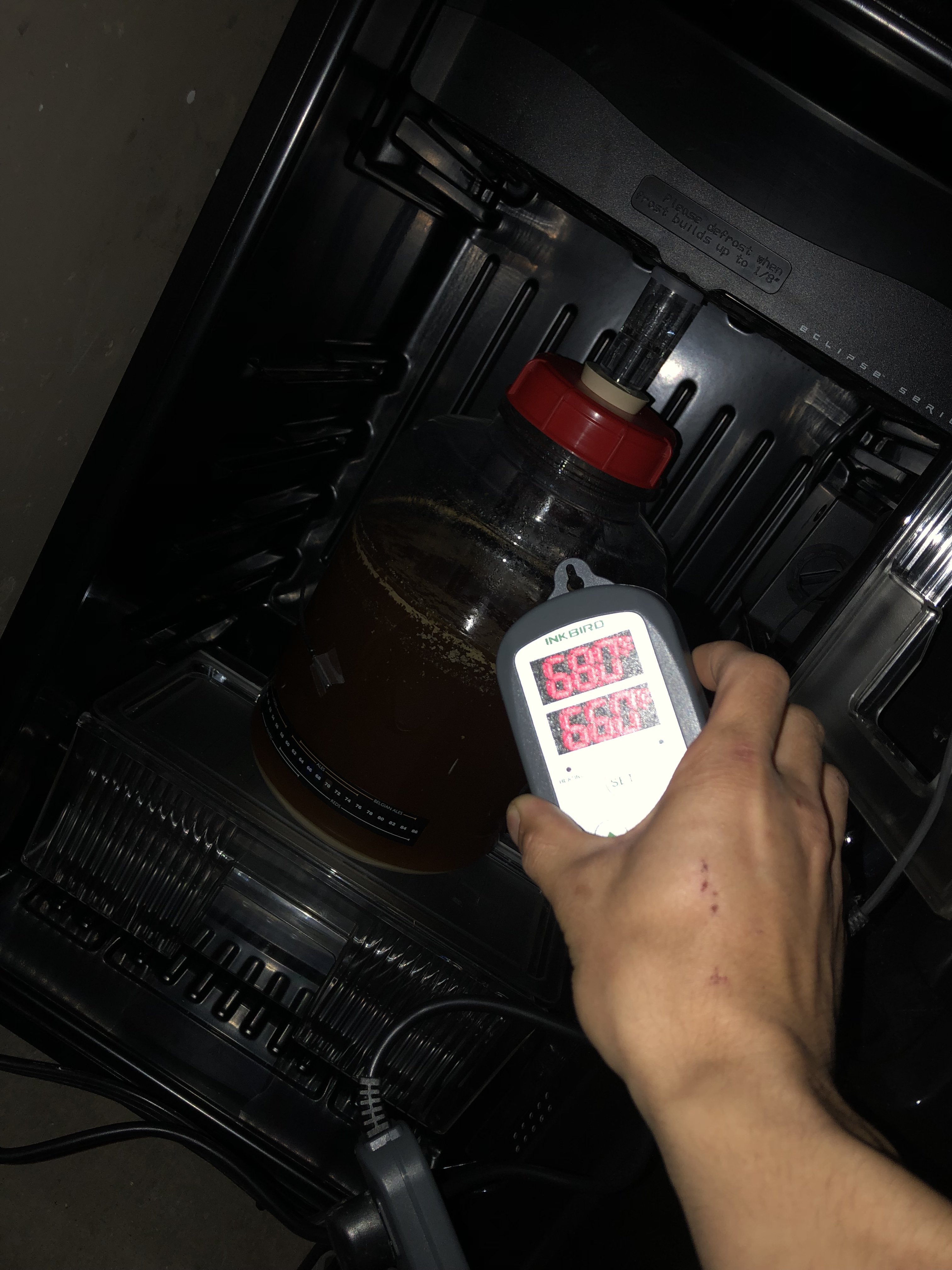Jordan Logo
Well-Known Member
Wanted to see if you guys had any specific suggestions! I currently ferment in a 3 gallon fermonster carboy.
Height: 14.6”
Diameter: 9”
Height: 14.6”
Diameter: 9”

1 gallon is not a lot of beer. Is there a reason not to make larger batches?










![Craft A Brew - Safale S-04 Dry Yeast - Fermentis - English Ale Dry Yeast - For English and American Ales and Hard Apple Ciders - Ingredients for Home Brewing - Beer Making Supplies - [1 Pack]](https://m.media-amazon.com/images/I/41fVGNh6JfL._SL500_.jpg)


Sorry to hear you missed your target OG by that much, especially using BIAB. Most common reason is the grain was milled too coarsely, a typical LHBS/online vendor problem. You could ask to run it through the mill twice, it helps, but best is to mill with the correct gap the first time. Especially using BIAB, the grist can be very fine, almost to a powder, since the fine-mesh bag is the filter.@IslandLizard i have a question..... I just tried brewing Brülosophy’s Best Ale the other day using a BIAB method - my first ever BIAB.
Unfortunately I missed my OG by about .015 (1.030 VS the estimated of 1.045). I went ahead and boiled the needed amount of DME and threw that in maybe a day and a half into fermentation (San Diego Super Yeast). When I threw it in, the ferment was bubbling a tad but my ferment temp was pretty high at around 72-75°F. When I look at the bubbler now it’s not really bubbling at all. Any reason why?
Sorry to hear you missed your target OG by that much, especially using BIAB. Most common reason is the grain was milled too coarsely, a typical LHBS/online vendor problem. You could ask to run it through the mill twice, it helps, but best is to mill with the correct gap the first time. Especially using BIAB, the grist can be very fine, almost to a powder, since the fine-mesh bag is the filter.
Since you missed the OG by 33% something else may be going on. Maybe too much sugar was left in the wet grist, or you mashed at temps that were too low or too high, or not long enough. Many recipes are formulated for 75% mash efficiency, in that case it means you only got 50%. Most BIAB brewers enjoy 85% and up. It usually takes a few brews to get all the kinks worked out. Keep studying.
Post the recipe if you want.
Don't judge fermentation by airlock activity. A small leak somewhere (the lid, airlock, bung, etc.) could prevent it from bubbling, while it's fermenting fine.
Adding the extra DME should not cause fermentation to stall. A foamy krausen is the usual sign of a good fermentation taking place. When the krausen starts to drop (disappear) it's a sign that most fermentation is done, the yeast/beer is entering the conditioning phase. Once fermentation slows down slowly raise the temps a few degrees to help her finish out. Once all signs ceased, let her be for another week (or 2) at those slightly higher temps. No secondaries!
Now it's very possible that your beer was already done. 1.030 at 72-75F can ferment fast, as quickly as in 1-2 days. Then the additional 15 points of DME fermented out quickly too, yeast was abundant. You can swirl the jug or gently stir to rouse the yeast from the bottom back into suspension. She should resume if there are any fermentables left. It's very possible she's done. How long has it been since you added the DME? You could take a gravity sample if you've seen no activity (foam) for a week.
Next time try to stay in the lower temp ranges for your yeast, until it's mostly done, then raise a bit. It makes better beer.
Also try to prevent air (oxygen) exposure once fermentation starts. By lifting the lid you will lose a lot of the headspace CO2 quickly, being replaced with air (21% oxygen). So leave it on. For example to add dry hops just remove the airlock bung. Work quickly. Best would be to have CO2 available so you can flush the headspace or stream CO2 into the headspace while tinkering with it.
To take a sample, say for a gravity reading, you can snake a thin 5/16" OD hose down the hole in the airlock stopper. Sanitize the hose and spray the airlock stopper area with Starsan first before removing the airlock.
Then suck/siphon some beer out into a small container for a gravity/taste sample. Don't let any beer flow back while doing that, pull the hose out quickly when you've collected enough. Replace airlock. That way the headspace remains minimally disturbed.
Now with 1 gallon batches, taking 3-4 oz samples is a relatively large amount, so don't do it too often or you won't have any beer left to bottle.
Sorry to hear you missed your target OG by that much, especially using BIAB. Most common reason is the grain was milled too coarsely, a typical LHBS/online vendor problem. You could ask to run it through the mill twice, it helps, but best is to mill with the correct gap the first time.
Fermentables added to an established fermentation usually get consumed fast, unless the alcohol is fairly high, slowing the yeast down.I literally added the DME roughly a day and a half into fermentation. I’m new to small batches so maybe it really did ferment that fast lol!
More like hijacking the thread. But since it could help the OP, we'll let it slide this time.This might be off topic, but I’ve just purchased a mill and I’m wondering about the right gap to start with. Suggestions?
Fermentables added to an established fermentation usually get consumed fast, unless the alcohol is fairly high, slowing the yeast down.
Was this a Hefeweizen?
Also how much yeast did you pitch to your 1 gallon batch? Which yeast?